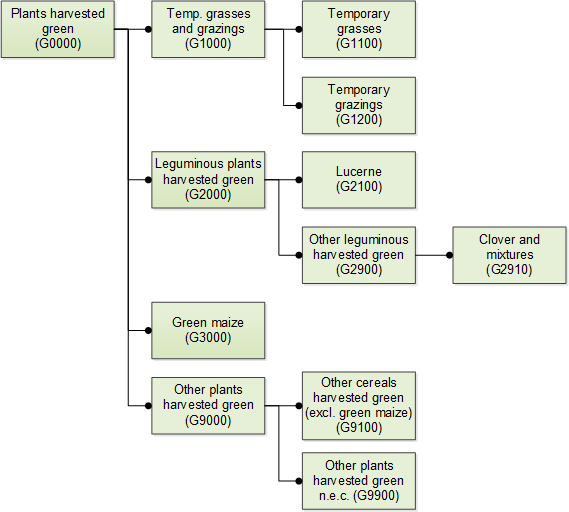Glossary:Plants harvested green
Plants harvested green are all arable land crops harvested ‘green’ and intended mainly for animal feed, forage or renewable energy production, namely cereals, grasses, leguminous or industrial crops and other arable land crops harvested and/or used ‘green’.
The crops should be grown in rotation with other crops, occupying the same parcel for less than 5 years (annual or multi-annual fodder crops). ‘Green crops’ (as opposed to those ‘for dry grain’) are normally used for allowing animals to graze or are harvested green, but can be also harvested dried, like hay.
Generally, the whole plant, except the roots, is harvested and used for fodder, forage or renewable energy production (for example, production of bio-mass from green maize).
Includes
- Cereals, industrial plants and other arable land crops harvested and/or used green
- Crops not used on the holding but sold, either for direct use on other agricultural holdings or to industry
- Plants used on the own farm as fodder
- Production of biomass from green maize
- Plants used for energy production
Excludes
- Energy crops (I6000)
- Areas used solely for plants for green manure (Q0000)
- Fodder roots and brassicas (not used as manure) (R9000)
- Permanent grasslands (J0000)
Tree
